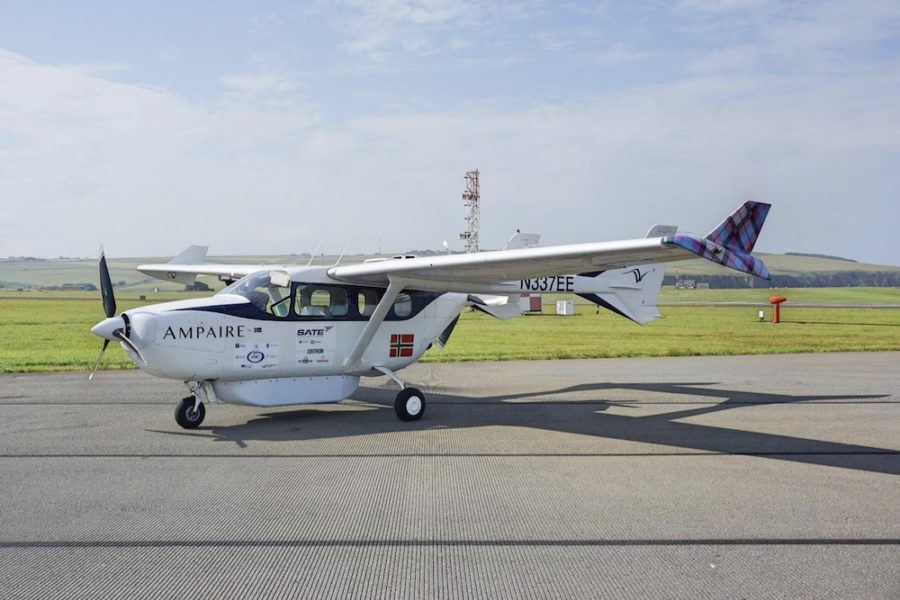
L'avion électrique EEL d'Ampaire a volé pour la première fois en Écosse. © Ampaire/Neil Thain
Le Skymaster EEL d’Ampaire a effectué son premier vol sur une ligne existante en Écosse, partant de l’aéroport de Kirkwall (KOI), sur les îles Orcades, jusqu’à l’aéroport régional de Wick John O’Groats (WIC), distants de 30 NM (56 km) au nord de l’Écosse.
Ces essais, les premiers à être effectués sur une ligne aérienne régionale en Écosse après le test mené à Hawaï, s’inscrivent dans le cadre du projet SATE (Sustainable Aviation Test Environment), qui est mené par Highlands et Islands...

6 commentaires
La possibilité de commenter une information est désormais offerte aux seuls abonnés Premium d’Aerobuzz.fr. Ce choix s’est imposé pour enrayer une dérive détestable. Nous souhaitons qu’à travers leurs commentaires, nos lecteurs puissent apporter une information complémentaire dans l’intérêt de tous, sans craindre de se faire tacler par des internautes anonymes et vindicatifs.
Une fois de plus, les médias nous embarques dans leurs désirs et délirs, maintenant suivit par les politiques.
La technologies des batteries c’est peu améliorée en 30 ans.
L’énergie que peut délivrer 1kg d’essence est de 12000 Wh/kg.
Les meilleurs batteries safe sont à 250 Wh/kg.
On peut arriver à 500 Wh/kg Si on gère les risques incendie.
La messe est dite.
Le problème n’est pas aéronautique mais il réside sur la recherche appliquée sur le stockage et/ou la production d’électricité/kg d’unité.
Pay load ?
Bonjour,
Ampaire donne 3 passagers ou 450 lbs soit environ 204 kg.
Bonjour,
Dans l’aéronautique, le standard pour un Pax, c’est 200lbs (90 kg environ), pas 150 lbs…. Bien tenté de la part d’Ampaire, mais si seuls les américains de moins de 70kg peuvent monter dans leur avion….. ils vont pas embarquer quand monde.
Bof, c’est comme les DR-400 : deux pax et demi, soit deux adultes et un enfant en place arrière…
Après la différence de masse s’explique aussi par la position de cette masse de l’avion et donc des limites de centrage. Pas de cargo en place droite par exemple, mais tout derrière…
Super – ça fait un biplace….